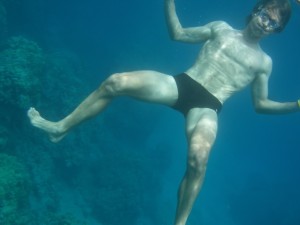It’s another beautiful Saturday morning on the front range and your preparing for a moderate to hard training session with your buddies. The beginning of the workout starts off easy allowing the body to warm up at a “social pace”. This means that the effort is easy enough so you can carry on a conversation without gasping for air. Before engaging in the main part of the workout, it is most beneficial to include what I call a “transition period”. Here is the time to include 2 or 3 efforts with equal amount of rest where you gradually increase your intensity to a moderately hard effort for 20-30 seconds up to 1 minute depending on the demands of the workout. This will further allow the body to profuse more blood to the working muscles, opening up capillary beds as well as elevating heart rate.
Now your ready to get to the meat and potatoes of the training session, the intensity starts cranking up, but you feel like you can’t get enough air. Yes, I know there is less oxygen here at 5000 feet, but what I am referring to is what are you doing with your air in particular your exhale?
Of the three disciplines in the sport of triathlon, swimming posses the most challenges in this regard since your face is in the water making air not as readily available. But, this is the perfect opportunity to exhale some, not all of your air to keep the breathing rhythm. Your body knows to breathe in, so focus on making your exhale more effective to balance the inhale. Imagine cycling or running and holding your breath for 2-3 seconds at a time. You will find that you get tired very quickly. This is the challenge the novice swimmer faces most often. As soon as their face is in the water, they hold their breath. This interrupts the breathing rhythm creates unnecessary tension in the body and a tense body will usually gravitate towards sinking.
Here are a few some simple things to try on your next swim to help make your breathing a bit easier.
Face in water = exhale some not all of your air, blow bubbles
Face out of water = inhale air, not gasp!
Relax your neck muscles as much as possible.
Breathing pattern does not have to be static. Left side, ride side, every 2nd or 3rd stroke. Water conditions and level of effort will determine what is best for you.
When breathing is relaxed and rhythmic, you will be able to work on other parts of your swimming stroke that in time will have you going faster, farther, & with less effort.
Make it a great week,
Coach Eric


I like it - good reminders